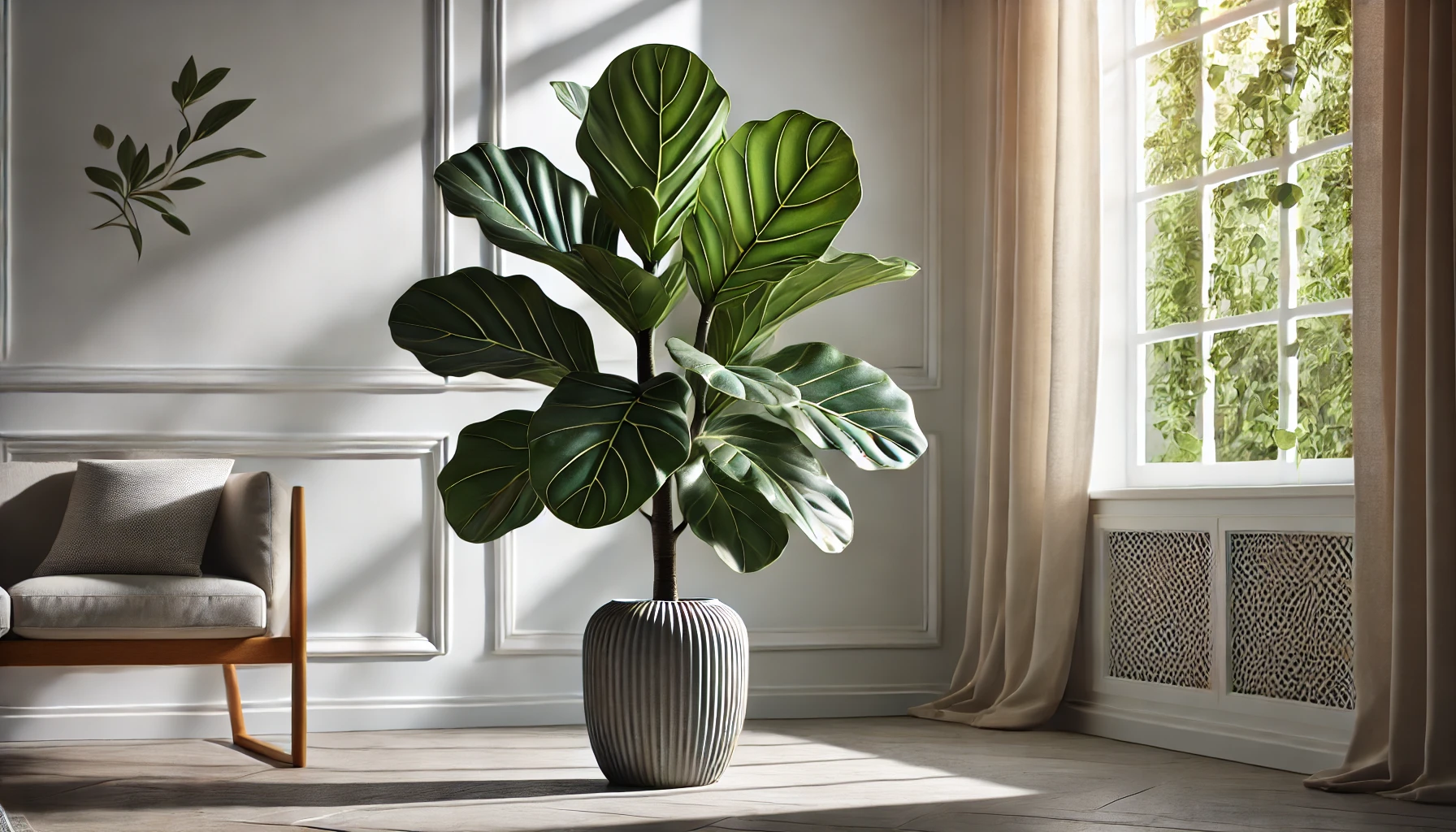
The Fiddle Leaf Fig, known scientifically as Ficus lyrata, is a popular houseplant famous for its large, violin-shaped leaves and elegant, sculptural presence. With its bold and dramatic appearance, the Fiddle Leaf Fig can instantly elevate the look of any room. Typically, this plant can grow up to 6 feet tall indoors, but with optimal care, it can reach heights of up to 10 feet or more.
A Brief History and Ideal Growing Conditions
Native to the tropical rainforests of West Africa, the Fiddle Leaf Fig has become a beloved houseplant around the world, particularly in interior design circles. It thrives in warm, humid environments that mimic its natural habitat. This plant prefers bright, indirect light and can even tolerate some direct sunlight if introduced gradually.
Fiddle Leaf Figs and Pets: What You Need to Know
While the Fiddle Leaf Fig is a stunning addition to any home, it is important to note that it is toxic to pets. If ingested by cats or dogs, it can cause oral irritation, excessive drooling, and vomiting. Therefore, it’s best to place your Fiddle Leaf Fig in an area where your furry friends can’t reach it.
Best Practices for Caring for Your Fiddle Leaf Fig
Caring for a Fiddle Leaf Fig can be a bit more demanding than some other houseplants, but with the right knowledge and attention, it can thrive and become a beautiful focal point in your home.
Watering and Humidity
Fiddle Leaf Figs prefer a consistent watering schedule. Water the plant thoroughly when the top inch of soil feels dry, ensuring that excess water drains out of the pot to prevent root rot. In general, watering once a week is a good starting point, but you may need to adjust based on your specific environment. These plants also appreciate higher humidity levels. If your home is dry, consider using a humidifier or placing the plant on a tray with pebbles and water to increase the humidity around it.
Soil, Light, and Temperature
A well-draining potting mix is essential for Fiddle Leaf Figs. They thrive in bright, indirect light and can even handle some direct sunlight if acclimated slowly. Place your plant near a window where it can receive plenty of light but avoid harsh, direct afternoon sun. Fiddle Leaf Figs prefer temperatures between 60°F and 75°F. They are sensitive to temperature fluctuations and drafts, so keep them away from air conditioners, heaters, and drafty windows.
Common Problems and Remedies
Even with the best care, Fiddle Leaf Figs can encounter some common issues. Brown spots on the leaves can be caused by overwatering, underwatering, or fungal infections. To address this, ensure a consistent watering schedule and check for proper drainage. If fungal infections are suspected, remove the affected leaves and treat the plant with a fungicide.
Yellowing leaves can indicate root rot, often caused by overwatering. If you notice yellowing, remove the plant from its pot, trim any rotten roots, and repot it in fresh, well-draining soil. Drooping leaves can be a sign of both underwatering and overwatering, so make sure to monitor the soil moisture and adjust your watering practices accordingly.
Fiddle Leaf Figs can also be affected by pests such as spider mites and scale. To combat these pests, use a water and mild soap solution or neem oil spray. Regularly inspecting your plant and wiping down the leaves can help prevent pest infestations.
Propagation and Benefits
Propagating Fiddle Leaf Figs can be done through stem cuttings. Cut a healthy stem with a few leaves and place it in water or moist soil to root. Before long, you’ll have new plants to share or add to your collection.
Fiddle Leaf Figs are not only beautiful but also beneficial to your indoor environment. They help purify the air by removing toxins such as formaldehyde and xylene, making them a healthy addition to your home.
Final Thoughts
Fiddle Leaf Figs are one of the most sought-after houseplants for a reason. Their striking appearance and ability to transform any space make them a favorite among plant enthusiasts and interior designers alike. While they do require a bit more care and attention than some other plants, the rewards are well worth the effort. With the right care, your Fiddle Leaf Fig can thrive and become a stunning focal point in your home. So why not add a Fiddle Leaf Fig to your collection and enjoy the beauty and elegance it brings?
Stay connected with the world of plants! Subscribe to Phylofy for expert gardening tips, DIY projects, and eco-friendly inspiration. Join our community and nurture your love for nature. Don’t miss exclusive content and updates. Subscribe now!



